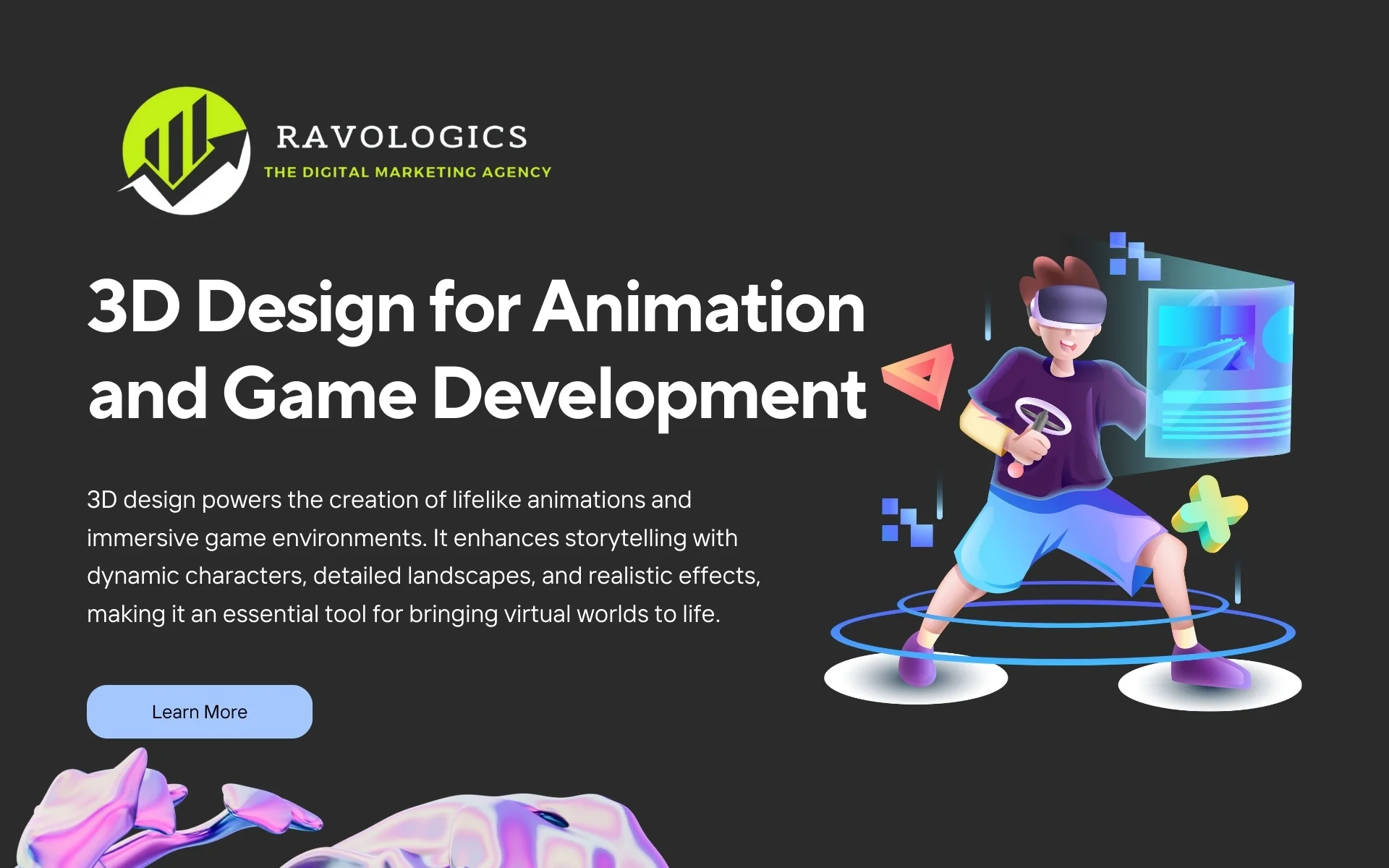3D design is a cornerstone of modern animation and game development. It empowers creators to craft visually stunning worlds, lifelike characters, and immersive experiences for audiences across various platforms, including virtual reality (VR), augmented reality (AR), and traditional mediums.
This article delves into the essential aspects of 3D design, offering insights, tips, and best practices for beginners and professionals alike.
The Role of 3D Design in Animation and Game Development
3D design serves as the foundation for creating digital assets that populate the worlds of games, movies, and AR/VR experiences.
In game development, 3D models are used to design characters, environments, weapons, and props, forming the building blocks of interactive experiences.
In animation, 3D design allows for the creation of cinematic effects, storytelling, and lifelike movements, making movies and videos more engaging.
Whether it’s designing characters for an RPG, animating a short film, or building virtual products for AR marketing, 3D design plays a pivotal role in turning creative visions into reality.
Core Techniques in 3D Design
Modeling
3D modeling is the process of creating three-dimensional representations of objects. It involves defining the shape, size, and structure of a model using specialized software.
- Applications: Characters, environments, and product prototypes.
- Tools: Blender, Maya, 3ds Max.
- Keywords: how to make 3D assets for Facebook Spark AR, creating 3D assets for game development.
Texturing and Shading
Adding color, patterns, and materials to models makes them visually appealing. Shaders and textures create depth and realism, essential for immersive visuals in games and animations.
Rigging and Animation
Rigging involves creating a skeleton for a model, allowing it to move naturally. Animation brings these models to life, enabling realistic movements and expressions.
Software for 3D Design
Blender
A versatile, open-source tool perfect for both beginners and professionals. It supports modeling, animation, and rendering. It is ideal for creating cinematic effects.
Unity and Unreal Engine
These engines are widely used for game development, enabling the integration of 3D assets with interactive functionalities.
Roblox Studio
A platform designed for creating games, particularly popular among beginners and indie developers.
Specialized Tools for AR/VR
Spark AR and similar tools are designed for creating assets tailored to augmented and virtual reality applications.
Best Practices in 3D Design for Different Applications
Game Development
- Focus on optimized models to ensure performance across devices.
- Use efficient poly-counts to balance quality and rendering speed.
Animation
- Prioritize storytelling through cinematic effects and natural movements.
- Experiment with advanced tools like Maya or Blender for complex projects.
VR and AR
- Optimize 3D assets for real-time interaction in immersive environments.
- Test models across various AR/VR platforms to ensure compatibility.
Virtual Product Demos and Social Media
- Use 3D design for creating product animations for marketing campaigns.
- Develop realistic product prototypes for AR-based virtual try-ons.
Tips for Beginners in 3D Design
Start with Beginner-Friendly Tools
Blender is an excellent choice for new users. Tutorials and communities are abundant, making it easy to learn.
Learn to Create Characters
Character modeling can be a fun and rewarding starting point. Focus on simple designs before moving to advanced detailing.
Experiment and Practice
Consistency is key. Practice by creating simple objects, experimenting with textures, and learning the basics of animation.
Advanced Techniques and Trends in 3D Design
AR/VR Applications
Learn how to use 3D models in AR apps and VR environments to deliver immersive customer experiences.
Furniture and Interior Design
3D modeling is widely used to create realistic furniture layouts and interior designs, providing clients with a virtual preview.
Cinematic Effects
Advanced 3D tools enable the creation of effects like explosions, weather simulations, and character transformations, adding depth to animations.
FAQs
What is the best software for 3D design beginners?
Blender is highly recommended for its user-friendly interface and free access.
How can I start creating 3D characters for games?
Begin with tutorials in Blender or Maya, focusing on basic shapes and rigging.
What are the key tips for 3D animation in Blender?
Learn the basics of keyframes, practice smooth transitions, and use lighting effectively.
How is 3D design used in augmented reality apps?
3D models are used in AR to create interactive objects and realistic environments that respond to user input.
What are the best practices for VR game asset optimization?
Keep assets lightweight with optimized textures and low poly-counts to ensure smooth performance in VR environments.
Conclusion
3D design is a dynamic field, integral to animation, game development, AR/VR, and more.
By mastering the basics, exploring software tools, and following best practices, creators can produce visually stunning and functional 3D assets.
Whether you’re a beginner or an experienced designer, 3D design offers endless opportunities to bring ideas to life.




Leave a comment